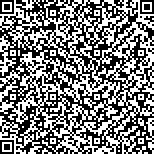随燕芳,宋振华,曾骥,等.高频重复经颅磁刺激联合艾司西酞普兰对脑卒中后抑郁患者神经功能、抑郁状态及其血清炎症因子的影响[J].中华物理医学与康复杂志,2021,43(9):793-796
扫码阅读全文

|
| 高频重复经颅磁刺激联合艾司西酞普兰对脑卒中后抑郁患者神经功能、抑郁状态及其血清炎症因子的影响 |
|
| |
| DOI:10.3760/cma.j.issn.0254-1424.2021.09.005 |
| 中文关键词: 重复经颅磁刺激 艾司西酞普兰 脑卒中 脑卒中后抑郁 炎症反应 |
| 英文关键词: Transcranial magnetic stimulation Escitalopram Stroke Depression Inflammation |
| 基金项目:国家科学自然基金(81272156);海南省卫生健康行业科研项目(20A200059) |
|
| 摘要点击次数: 5802 |
| 全文下载次数: 5570 |
| 中文摘要: |
| 目的 观察高频重复经颅磁刺激联合艾司西酞普兰对脑卒中后抑郁患者神经功能、抑郁状态和血清中肿瘤坏死因子-α(TNF-α)、白细胞介素-2(IL-2)、白细胞介素-6(IL-6)的影响。 方法 选取脑卒中后抑郁状态患者80例,按随机数字表分为实验组和对照组,每组患者40例。对照组给予口服艾司西酞普兰治疗。实验组在对照组药物治疗方案的基础上增加高频rTMS治疗,磁刺激强度为80%的静息运动阈值,频率为5 Hz,rTMS治疗每日1次,每周治疗5 d,连续治疗8周。于治疗前和治疗8周后(治疗后)采用美国国立卫生院脑卒中评分(NIHSS)、汉密尔顿抑郁量表(HAMD)分别评估2组患者的神经功能和抑郁状态,并同时采用酶联免疫吸附法检测2组患者血清标本中的肿瘤坏死因子-α(TNF-α)、白细胞介素-2(IL-2)和白细胞介素-6(IL-6)。 结果 治疗后,2组患者的NIHSS和HAMD评分以及TNF-α、IL-2、IL-6较组内治疗前均显著改善,差异均有统计学意义(P<0.05)。实验组患者治疗后的NIHSS 和HAMD评分分别为7.07±1.97(分)和9.39±2.61(分),TNF-α、IL-2、IL-6分别为(84.82±11.35)pg/mL、(4.16±1.32)ng/L、(5.75±1.46)ng/L,上述各项指标与对照组治疗后比较,差异均有统计学意义(P<0.05)。 结论 艾司西酞普兰联合高频重复经颅磁刺激可更有效地改善脑卒中患者的抑郁状态和神经功能,抑制炎症反应。 |
| 英文摘要: |
| Objective To investigate the effect of combining repeated high-frequency transcranial magnetic stimulation (rTMS) with escitalopram in treating the neurological functioning and post-stroke depression of stroke survivors. Methods Eighty persons with post-stroke depression were randomly divided into an observation group and a control group, each of 40. The control group was treated with oral escitalopram, while the observation group also received transcranial magnetic stimulation at 5Hz. The magnetic stimulation intensity was 80% of each person′s resting motion threshold. The rTMS was administered once a day, 5 days a week for 8 weeks. Neurological functioning and depression were evaluated using National Institutes of Health stroke scoring (NIHSS) and the Hamilton depression scale before and after the 8 weeks of treatment. The levels of tumor necrosis factor-α (TNF-α), interleukin-2 (IL-2) and interleukin-6 (IL-6) in serum samples from the two groups were detected using enzyme-linked immunosorbent assays. Results After treatment, the NIHSS and Hamilton scores and TNF-α, IL-2 and IL-6 levels in both groups had improved significantly, but in each case they were significantly better in the treated group, on average. Conclusion Supplementing escitalopram with high-frequency transcranial magnetic stimulation more effectively improves depression and neurological functioning after a stroke. |
|
查看全文
查看/发表评论 下载PDF阅读器 |
| 关闭 |